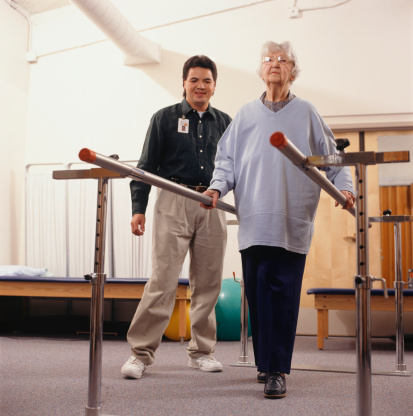Editors’ Note: An Einstein-led study with an average follow-up of nearly four years found that 26 percent of initially healthy people over age 60 met criteria for a predementia condition known as Motoric Cognitive Risk Syndrome (MCR). The research was published last week in Neurology, the medical journal of the American Academy of Neurology.
 MCR is a newly described condition characterized by slow gait and cognitive complaints. It was first outlined in research led by Dr. Joe Verghese, chief of the division of geriatrics in the department of medicine at Albert Einstein College of Medicine and Montefiore Medical Center. Dr. Verghese is also the director of the division of cognitive and motor aging in the department of neurology at Einstein and Montefiore and is the director of the Montefiore Einstein Center for the Aging Brain, which serves as a “one-stop shop“ for comprehensive care for illnesses and quality-of-life issues associated with aging.
MCR is a newly described condition characterized by slow gait and cognitive complaints. It was first outlined in research led by Dr. Joe Verghese, chief of the division of geriatrics in the department of medicine at Albert Einstein College of Medicine and Montefiore Medical Center. Dr. Verghese is also the director of the division of cognitive and motor aging in the department of neurology at Einstein and Montefiore and is the director of the Montefiore Einstein Center for the Aging Brain, which serves as a “one-stop shop“ for comprehensive care for illnesses and quality-of-life issues associated with aging.
 Dr. Verghese’s most recent study, on more than 3,000 adults over the age of 60, found that the risk of developing MCR correlates with an increasing number of risk factors, some of which are modifiable. They include stroke, Parkinson’s disease, depression, limited activity and obesity.
Dr. Verghese’s most recent study, on more than 3,000 adults over the age of 60, found that the risk of developing MCR correlates with an increasing number of risk factors, some of which are modifiable. They include stroke, Parkinson’s disease, depression, limited activity and obesity.
The Doctor’s Tablet recently sat down with Dr. Verghese to discuss MCR and how his latest findings about the syndrome can help reveal which older patients are at high risk for dementia. Science Media Relations Manager Kim Newman contributed to this post.
1. What is Motoric Cognitive Risk Syndrome?
Motoric Cognitive Risk Syndrome, or MCR, is a clinical approach to identify older adults who are at high risk for converting to dementia. Being diagnosed with MCR syndrome does not automatically mean that you have dementia, but you are on the pathway. The criteria for MCR should include memory complaints, such as forgetting the names of objects, misplacing documents, getting lost and slow gait.
Our work over the last ten years has shown that gait starts slowing many years before someone may develop dementia. There are a number of reasons; whether it’s vascular disease, Alzheimer’s or Parkinson’s, these diseases affect parts of the brain involved in gait and cognition. We use MCR as a clinical marker to determine who might progress and develop dementia.
The simplest way to test for gait is to have the patient walk a fixed distance and time that walk. In our research setting, we test gait in a more sophisticated way, using an instrumented walkway with a computer program attached that measures a number of factors.
It’s important to remember that identifying MCR is not the same as diagnosing that an older person has dementia. It is a red flag and, thus, an opportunity for clinicians and researchers to reduce the number of people who convert to dementia.
2. What are the findings from your latest paper?
We previously described how common MCR is across the world in a paper that involved 17 studies in 22 countries. With our latest paper, we tried to assess how many new cases (that is, what incidence) of MCR we’d expect to see in older adults in different settings. So we used data from four different U.S. studies—two based at Einstein (the Einstein Aging Study and the LonGenity Research Study) and two from Rush University Medical Center in Chicago (the Memory and Aging Project and the Religious Orders Study). The incidence of MCR syndrome was roughly similar for all four studies: 65 new cases of MCR would be expected for 1,000 older persons observed for one year.
The other purpose of the study was to determine potentially modifiable risk factors for MCR. In our previous study, we couldn’t say which came first, the risk factors or MCR. If the risk factors were present before MCR developed, that would imply that these risk factors had a casual role in MCR. In this new study we took older people who didn’t meet criteria for MCR and then looked at selected risk factors when they enrolled in the study—medical illnesses and lifestyle choices, such as activity level, weight and level of education, all of which have been linked to risk of dementia—and were able to see which of these factors predicted development of MCR. Stroke, Parkinson’s disease, depression, limited activity and obesity turned out to be significant predictors of MCR.
3. How is MCR going to help clinicians determine who’s at risk for dementia?
There are many approaches that have been proposed to identify who’s at risk for dementia. The earlier you identify who faces such a risk, the earlier you can order the right tests to start management and introduce some preventive measures against cognitive decline.
I would like to stress that compared to other approaches, such as advanced neuroimaging or spinal fluid examinations, diagnosing MCR is simple and can be easily implemented in a clinical setting or in a place with limited resources. If everything we focus on is high-tech, that’s not going to help most people with dementia; it’s estimated that 60 percent of people with dementia live in developing countries.
With MCR, you don’t need a doctor to do the test. You can train a healthcare worker to perform the test, which would be very useful for community health and screening situations. Part of my motivation for this work was to develop a simple clinical tool to identify older adults at risk for dementia that someone in rural India or Africa—hundreds of miles from an MRI machine or thousands of miles from obtaining the latest amyloid PET scan—could use.
4. Are you concerned that the MCR test might be conducted improperly or its results be misinterpreted?
No. The bigger issue is that more than half of older adults with cognitive decline or dementia go undiagnosed in primary care settings. The MCR approach is inexpensive, noninvasive and quick. If someone meets the criteria, this is not an indication to start treating them, but an indication to investigate the causes and suggest preventive strategies.
5. Is the test too new to be considered for routine clinical use now?
The MCR approach has now been tested in more than 20 studies in 17 countries, and has been found to be a robust construct and a strong predictor for dementia. It is my hope that we will start seeing this concept spreading from research settings to clinical settings over the next few years.
6. Why would understanding the risk factors for MCR make a difference for dementia?
MCR is important only because it predicts dementia, so the goal would be to act on these risk factors.
For example, say you reduce people’s risk of stroke by getting them to exercise or putting them on aspirin; then the hope is that the incidence of MCR can be reduced and downstream you can reduce the incidence of dementia as well. Being sedentary is a risk factor for MCR, which suggests that if you could increase exercise levels in older people, then potentially you could reduce the risk of MCR and ultimately of dementia. This is why it’s important to know the risk factors for MCR, so you can develop prevention methods that would be effective to reduce the risk of dementia.
7. What interventions do you recommend to your patients for preventing cognitive decline?
This is a question I get asked often. At this point, there isn’t any medication to take that would prevent your risk of dementia, or cure it. The main intervention would be healthy lifestyle measures: increase physical activity, engage in cognitively stimulating activities and have a healthy diet. The other approach is controlling medical risk factors, especially vascular disease, lowering blood pressure and cholesterol, reducing weight; all would have an impact on pathways that would increase the risk of dementia.

